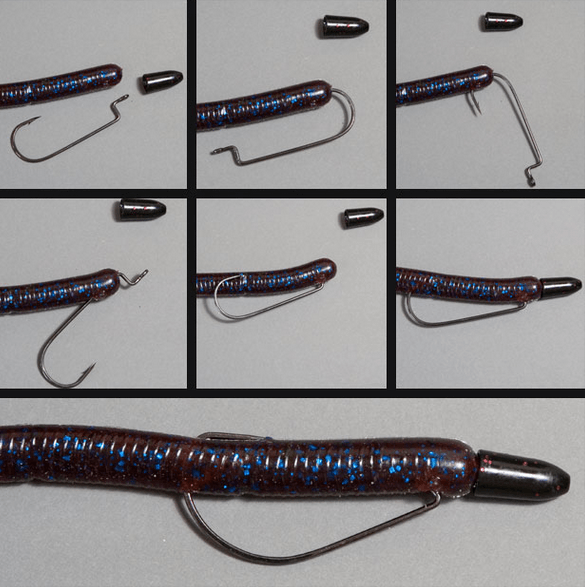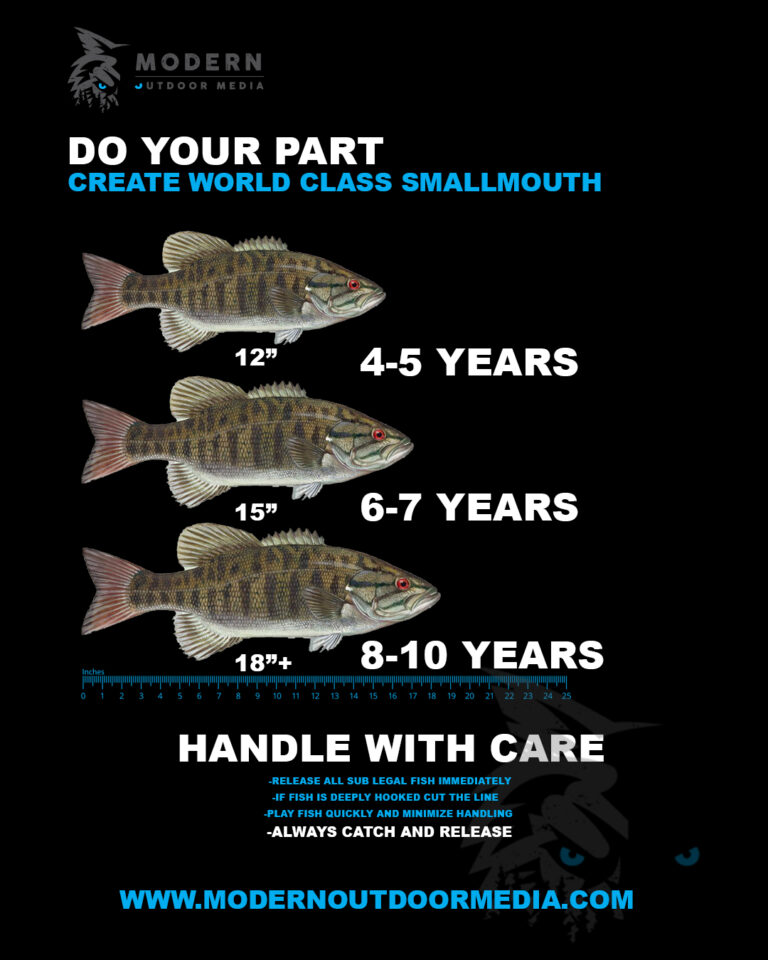How to Rig a Plastic Worm for Bass

To rig a plastic worm for bass, thread the hook through the worm’s head and out its side. Adjust the worm to sit straight on the hook to ensure a natural presentation.
Mastering the art of rigging a plastic worm can significantly enhance your bass fishing experience. Whether you’re a seasoned angler or a beginner, understanding how to properly secure a plastic worm on a hook is crucial for successful bass fishing.
The right rigging method can mean the difference between a trophy catch and an empty hook. With numerous techniques available, such as the Texas rig, Carolina rig, or wacky style, each one offers a distinct advantage based on the fishing conditions. By keeping your setup simple and efficient, you’ll be ready to tackle various underwater terrains and tempt bass with your lifelike worm presentation. Remember, the key is to align the worm to mimic natural movement, enticing bass to strike.
Choosing The Right Plastic Worm
Selecting the perfect plastic worm for bass fishing hinges on two key points: color and size. Vibrant colors work best in clear water and sunny conditions. In contrast, murky water calls for dark or brightly colored worms to be visible to bass. Regarding size, smaller worms are ideal for finesse situations, while larger ones suit aggressive presentations. Anglers often match the worm size to the bass size in the area.
| Type | Description | Best Use |
|---|---|---|
| Ribbon Tail | Long, sinuous tail | Open Water |
| Straight Worm | Consistent thickness | Drop Shotting |
| Curly Tail | Spiral tail motion | Slow Retrieve |
Mimicking natural prey leads to more successful catches. Therefore, understanding the local environment and bass behavior is crucial. Choosing a plastic worm that reflects these insights can significantly increase an angler’s success rate.
Essential Gear For Rigging
Bass fishing demands the right hooks and weights. Consider using a 3/0 to 5/0 size hook for versatility. Offset shank hooks work well with plastic worms. They keep the worm straight. Attach a bullet weight above the hook for easier casting. This weight helps the worm sink and move naturally. Tungsten weights are denser and more sensitive than lead.
Choosing a fishing rod and reel is key. A medium-heavy rod with fast action ensures good hook sets. It should be about 6.5 to 7.5 feet long. Match your rod with a baitcasting reel for better control. Look for a reel with a smooth drag system. A 6:1 gear ratio is perfect for quick retrieves. Practice casting with this setup to become skilled at feeling bites.
Popular Rigging Techniques
Bass fishing requires effective rigging of plastic worms. Texas Rig is a technique that uses a bullet-shaped weight, which you slide onto your line before tying on a hook. Anglers often use a soft plastic worm with a slight bend at the hook for a natural presentation.
The Carolina Rig differentiates itself with a leader line between the weight and hook. It allows the worm to move more freely in water, simulating a live worm better. This rig works great over soft bottoms and around underwater structures.
With the Wacky Rig, you hook the worm right in the middle. This gives the plastic worm a unique flapping action as it sinks, irresistible to bass. It’s simple but deadly efficient, especially when fishing in shallow waters.

Credit: tailoredtackle.com
Step-by-step Rigging Guide
Rigging a plastic worm for bass requires precision and care. Choose a worm that mimics real bait in color and size.
For securing the hook, insert it into the worm’s head. Push it through about half an inch.
Then, bring the hook out of the worm’s body. Ensure the worm hangs straight to look natural.
Adjusting weights is key for controlling depth. Use heavier weights to sink deeper.
Lighter weights work well in shallow water. This balance is critical for a successful catch.
Tips For Effective Worm Fishing
Mastering the art of casting is crucial for catching bass with plastic worms. For long distances, use a sidearm cast. Keep your wrist firm. Aim your cast to place the worm near structure where bass hide, like logs or rocks.
Retrieval patterns vary, so experiment often. A steady retrieval might work, but sometimes a jerk and pause pattern is better. This makes the worm move like real bait. Change speeds and methods until you find what the bass want.
To detect bass bites, watch the line for slight twitches or movements. Also, feel for changes in weight or tension on the rod. Bass often bite softly, so stay alert! If the line feels ‘weird’, it might be time to set the hook!

Credit: www.lurenet.com
Troubleshooting Common Issues
Snags can be frustrating but easy to fix. Make sure to use a light line and smaller hooks. These changes will help reduce the chance of getting stuck. If snags persist, try using a weedless hook setup. A weedless setup helps the worm move smoothly through thick underwater plants.
To ensure your plastic worm lasts longer, store them individually. Do not mix different colors as they may bleed. Use durable worms with natural colors for the best effect and extended use. For increased durability, add a small drop of super glue to the hook after threading the worm.
Careful observation of water clarity and temperature is key. In clear water, use lighter colors. Dark colors are better for muddy water. When the water is cold, slow down your retrieval. In warmer conditions, a faster retrieval could entice more bass.

Credit: tailoredtackle.com
Frequently Asked Questions On How To Rig A Plastic Worm For Bass
How Do You Hook Plastic Worms For Bass Fishing?
To hook plastic worms for bass fishing, thread the hook through the worm’s head, then embed the hook point back into the body for a weedless rig. Adjust hook placement for different actions and presentations, such as tail-end hooks for a nose-down fall.
How Do You Rig Plastic Bait For Bass?
Select a suitable hook and size for your plastic bait type. Thread the bait onto the hook, ensuring it sits straight for a natural presentation. Adjust for weedless rigging if needed. Cast near bass habitats like structures or vegetation.
What Is The Best Rig For Plastic Worms?
The best rig for plastic worms is the Texas rig due to its versatility and weedless presentation, ideal for various conditions.
What Is The Best Hook For Bass Plastic Worms?
The best hook for bass plastic worms is a 4/0 to 5/0 EWG (Extra Wide Gap) hook, ideal for optimal hookset and weedless presentations.
Conclusion
Mastering the art of plastic worm rigging can elevate your bass fishing game. Experiment with different techniques and find your sweet spot. Persistence and adaptation are key to your success. So grab your gear, hit the water, and watch as your skills lure in that impressive catch.
Happy fishing!





